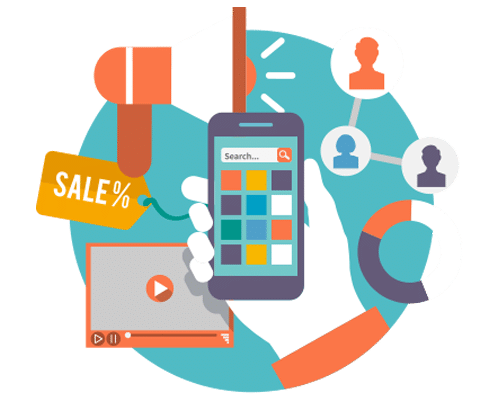Ecommerce Facets & Filters: Streamlining Product Discovery
Imagine you own an eCommerce store packed with amazing products. You want shoppers to find exactly what they need without frustration, so you add facets and filters to refine their search. But simply having filters isn’t enough—they need to be optimized for both user experience and SEO.
Start by using clear, descriptive labels. Instead of generic terms like “Color” or “Size,” opt for engaging labels like “Vibrant Colors” and “Comfortable Fit.” This helps users instantly understand their options and improves accessibility.
The more relevant facets and filters you provide, the easier it is for customers to narrow their search. However, be strategic—overloading them can overwhelm shoppers. Ensure filters are structured logically and, most importantly, mobile-friendly. With mobile shopping on the rise, intuitive filters that function smoothly on smartphones can significantly boost conversions.
Optimizing facets and filters not only enhances user experience but also improves search visibility. Proper indexing strategies ensure that search engines can crawl and rank filtered pages without creating duplicate content issues. A well-organized category and filter system is a win-win for SEO and user experience.

Ecommerce Structured Data: Enhancing Search Visibility
Structured data, or schema markup, is essential for eCommerce SEO because it helps search engines better understand your products and display them more prominently in search results. By implementing structured data correctly, you can improve visibility, enhance click-through rates, and even appear in rich results like product snippets.
Here are some key types of schema for eCommerce websites:
- Product Schema: Provides key details like product name, price, availability, and brand, making it easier for search engines to display this information directly in search results.
- Offer Schema: Highlights discounts, promotions, or special deals, which can increase click-through rates for time-sensitive offers.
- Review Schema: Showcases customer ratings and reviews, adding credibility and trust to your products.
- AggregateRating Schema: Displays an overall rating based on multiple customer reviews, increasing product appeal in search results.
Regularly updating and validating schema ensures that search engines always display accurate, up-to-date product information. Google’s Search Console and Schema Markup Testing Tool can help verify your structured data implementation.
Product Keyword Strategy: Driving Targeted Traffic
Keyword optimization is a crucial part of eCommerce SEO. When shoppers search for products online, they use specific terms, and ensuring your product listings align with these searches can significantly boost visibility and traffic.
Here’s how to optimize product pages with the right keywords:
- Keyword Research: Use tools like Google Keyword Planner, Ahrefs, and SEMrush to identify relevant product-related keywords with good search volume and manageable competition.
- Optimized Product Titles: Incorporate primary keywords naturally in product titles to improve search rankings. For example, instead of “Running Shoes,” use “Lightweight Running Shoes for Marathon Training.”
- Compelling Product Descriptions: Write engaging descriptions that include relevant keywords while maintaining readability and persuasiveness.
- Long-Tail Keywords: Focus on detailed, intent-driven phrases (e.g., “best waterproof hiking boots for winter”) to attract highly targeted traffic.
Effective keyword integration doesn’t just help with rankings—it improves conversions by aligning product pages with the exact phrases shoppers are searching for.
By combining well-structured facets and filters, schema markup, and targeted keyword strategies, your eCommerce site can maximize visibility, user experience, and sales.

Google Merchant Optimization: Maximizing Product Visibility
Running an online store means finding ways to get your products in front of as many potential customers as possible. Google Merchant Center helps by displaying your products across Google Shopping, Search, and other platforms, but simply uploading a product feed isn’t enough—you need to optimize it for maximum visibility and conversions.
Start with clear, descriptive product titles. Instead of generic labels like “Gadget” or “Gizmo,” craft engaging, keyword-rich titles like “Super Cool Gadget – The Ultimate Tool for Any Task!” or “Fancy Gizmo – The Must-Have Accessory for Any Tech Enthusiast!” This not only grabs attention but also helps your products rank better in search results.
High-quality images are essential. Shoppers want to see exactly what they’re buying, so showcase your products with multiple angles, lifestyle shots, and clear, professional visuals. Optimized images improve click-through rates and enhance the shopping experience.
Keywords matter too. Ensure your product descriptions naturally incorporate relevant search terms. If someone is searching for “gadgets for the kitchen,” having those keywords in your descriptions helps Google match your products to the right audience.
Finally, keep your pricing and availability accurate. Google prioritizes up-to-date, reliable listings, and nothing frustrates customers more than clicking on a product only to find it out of stock or at a different price. A well-optimized Google Merchant feed increases your chances of appearing in front of ready-to-buy customers.

Optimizing Your Ecommerce Sales Funnel for Conversions
A successful eCommerce sales funnel guides potential customers from discovery to purchase with minimal friction. Optimizing each stage—awareness, interest, decision, and action—ensures higher conversion rates and more sales.
Awareness: Attract potential buyers with SEO, paid ads, and social media marketing. The goal is to get your products in front of the right audience at the right time.
Interest: Keep shoppers engaged with compelling product pages, high-quality images, and informative content like blog posts or videos. Highlight key benefits and unique selling points.
Decision: Remove barriers to purchase by offering competitive pricing, trust signals (reviews, guarantees), and seamless navigation. Personalized email campaigns and limited-time offers can help push hesitant buyers to act.
Action: A smooth checkout process with multiple payment options, fast-loading pages, and clear shipping details reduces cart abandonment. Post-purchase emails and incentives for future purchases help build long-term customer loyalty.
By refining each stage of your sales funnel, you create a frictionless path to conversion, boosting revenue and customer retention.
